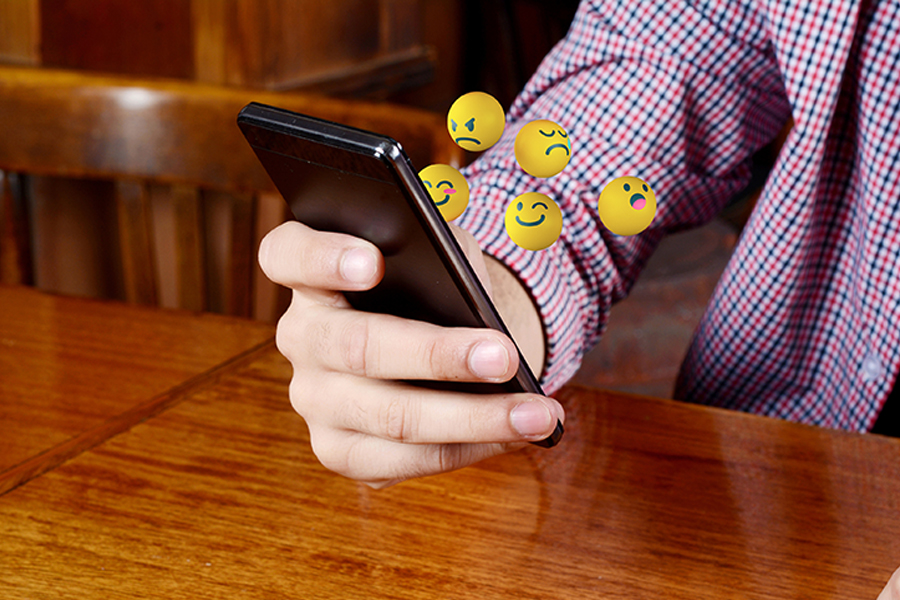
By Dr David Houghton, Senior Lecturer in Marketing
Department of Marketing, University of Birmingham
we are seeing plenty of new emojis challenging the status quo, from male- and female-only couples to the ability to change the skin colour for the majority of emoji characters.
When World Emoji Day was brought to my attention, my initial thought was “Really? Those annoying little characters have their own day?”. Given their use in day-to-day communication, it’s no surprise that we have an ever-growing catalogue of characters and symbols to choose from. They even have their own movie and are used as political weapons – perhaps I shouldn’t have been surprised that they have their own day as well.
In the beginning, there was ![]()
Emojis were first created in Japan back in 1999, when a large proportion of emoji users were not yet born. Gradually, they are replacing the seemingly ancient text-based emoticons that we used throughout the 90s and early 00s – a phenomenon that makes me nostalgic whenever I receive an emoticon-laden message as there’s something more personal in the effort of creating faces from text-based characters rather than just inserting those little yellow faces.
Social cues and interpretation
However, emojis are not always straightforward in their use and interpretation. Text-based communication removes the cues to tone, body language and any alternative meanings (for a good review of the “cues filtered” approach to computer-mediated communication, see Walther & Parkes, 2002). The use of an emoji to add some of these cues should not only add fun to the message, but help the reader interpret the message so that it becomes less ambiguous.
As an example, in response to the question, ‘how are you feeling?’ we may receive the message, ‘yeah alright, thanks’. At face value, the recipient is feeling OK, but read further into it and this could be a stern response. When the emphasis is placed on ‘thanks’, the response may be read as abrupt and sarcastic. However, if the reply were to use a smiley-faced emoji after the question, the positive intent becomes clearer i.e. ‘yeah alright, thanks ![]() ’.
’.
This all works well until we consider that emojis, like any other written language, have multiple interpretations and can add further ambiguity into the equation. Take a scenario in which a message recipient replies only with the smiley faced emoji and no text. Is the person sending the emoji feeling smiley, or are they showing empathy towards another? Or do they know that the original sender has received good news and is mirroring them?
When is it appropriate to use the smiley-faced emoji – ![]() – as opposed to the extremely smiley-faced emoji –
– as opposed to the extremely smiley-faced emoji – ![]() ? Initial findings of our research show the potential ambiguity of an emoji when used across different generations. Our research has also found that emoji characters can split perceptions of appropriateness when used in formal language. The use of emoticons when used in commercial relationships divides perceptions of warmth and competency i.e. customers perceive service employees who use emoticons as higher in warmth but lower in competence compared to those who do not (see Li et al., 2018). Each of these, and the image that you want to portray, are important points to consider when sending emojis.
? Initial findings of our research show the potential ambiguity of an emoji when used across different generations. Our research has also found that emoji characters can split perceptions of appropriateness when used in formal language. The use of emoticons when used in commercial relationships divides perceptions of warmth and competency i.e. customers perceive service employees who use emoticons as higher in warmth but lower in competence compared to those who do not (see Li et al., 2018). Each of these, and the image that you want to portray, are important points to consider when sending emojis.
Whilst the norms of communication will gradually iron out issues with emojis, determining whether our culture will fully adopt or reject them, new emojis will appear again and take time to fully embed their meaning.
The evolution of diversity
When Apple iOS first adopted the emoji, you had to install the emoji keyboard yourself from the App Store. Now, the emoji characters are instantly available and Apple is a major player in proposing new emoji characters, ultimately to show itself as a world leader in all things diversity. Given Apple’s position in the market, so it should be.
As a reflection of modern society, we are seeing plenty of new emojis challenging the status quo, from male- and female-only couples to the ability to change the skin colour for the majority of emoji characters. As we see emojis begin to evolve in line with our societal values, it may take a while for them to be commonplace, especially taking into consideration the potential interpretations that different audiences may have.
Emoji with caution ![]()
![]()
Therefore, like any other written or expressed language, we use characters and words to send a message, but the development of new symbols come with their own potential for misinterpretation. Emojis have come a long way, but humans are still the audience, and humans come bundled with their own set of interpretations, predispositions and experiences that can interfere with real meanings. Taking this into account, we should still write to our audience, at appropriate times, with appropriate language.
